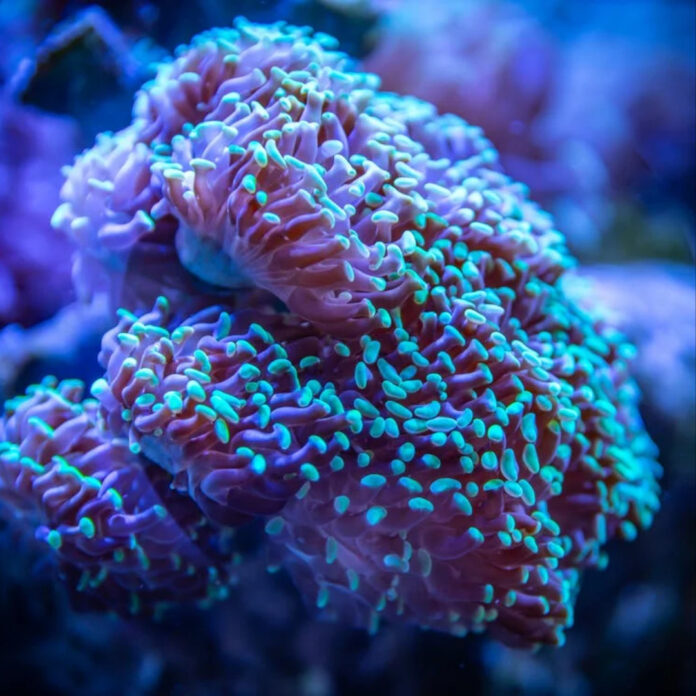Underneath the ocean waters is a world full of secrets but scientists have newly revealed one of its best-kept enigmas in the sea corals. For more than 25 years, drug hunters have been probing the origin of a biological chemical that had demonstrated favourable developments in preliminary investigations for ministering cancer. Currently, investigators at the University of Utah Health declared that easy-to-find soft corals—flexible corals that correspond to aquatic plants—produce the evasive compound.
Determining the origin permitted the investigators to go a stage forward and locate the animal’s DNA code so as to synthesize the chemical. By heeding that pedagogy, they were capable to carry out the foremost efforts of synthesizing the soft coral chemical in the laboratory.
A second investigation body guided by Bradley Moore, PhD, from Scripps Institution of Oceanography at the University of California San Diego, alone ascertained that corals make corresponding molecules. Both investigations are issued in the May 23 issue of Nature Chemical Biology.
Multiple Viewpoints and Possibilities of the Presence of Anti-Cancer Compounds
Unlike poisonous chemicals that are insinuated into prey, corals use their chemicals to scare away predators that attempt to ingest them. Since they are created to be consumed, the soft coral chemicals are readily digestible. Likewise, medicines derived from these sorts of compounds should be capable enough to be offered as tablets with a glass of water, preferably taken by injection or other more intrusive methods. “These compounds are harder to find but they’re easier to make in the lab and easier to take as medicine,” says Schmidt.
Corals aren’t the sole creatures that bear conceivable therapeutics. Nature is straggling with snakes, spiders and other creatures understood to harbour chemicals with recuperation effects. Nevertheless, combinations from soft corals deliver distinctive edges for drug development, Schmidt expressed.
Hounding for the Source From Sea Corals

Scesa uncovered the high-demand compound in an ordinary species of soft coral present off the Florida coast. In the 1990s, deep-water scientists documented that an infrequent coral near Australia bore a chemical, eleutherobin, with anti-cancer possessions. The chemical dissolves the cytoskeleton, a critical staging in cells, and soft corals utilise it as protection against predators. Despite this, laboratory examinations indicated that the compound was also a mighty inhibitor of cancer cell development.
Decades after, scientists scoured but could not uncover the notable “holy grail” chemical in the amounts required for drug development and couldn’t fix the problem without comprehending how the chemical was produced. Ideology had it that, analogous to other sorts of marine life, the chemical was produced by symbiotic organisms that survived inside the creatures.
Solving the enigma appeared as an assignment made for Scesa. As a boy growing up in Florida, the ocean was his playground, and he spent myriad hours analysing its deeps and wildlife. In graduate school, he acquired an inclination for organic chemistry and combined the two attractions to better comprehend the chemical variousness of the oceans.
Interpreting the Formula for the Anti-Cancer Drugs

The subsequent effort was to uncover whether the coral’s genetic code bore instructions for producing the compound. Advancements in DNA technology had newly made it conceivable to rapidly piece concurrently the code of any species. The problem was, that the scientists didn’t learn what the pedagogy for producing the chemical might look like. Envision digging a cookbook for a particular recipe, only you don’t know what any of the phrases inside the book convey.
They discoursed the difficulty by discovering parts of coral DNA that corresponded to genetic instructions for identical types of compounds from other species. After programming bacteria were developed in the lab to obey coral DNA pedagogy characteristic to the soft coral, the microorganisms were competent to reproduce the first stages of driving probable cancer medicinal compound.
This confirmed that soft corals are the origin of eleutherobin. It also established that it should be feasible to fabricate the compound in the lab. Their profession is now concentrating on sealing in the lacking steps of the compound’s formula and resolving the most suitable method to deliver extensive portions of the conceivable drug.
“My hope is to one day hand these to a doctor,” says Scesa. “I think of it as going from the bottom of the ocean to bench to bedside.”



